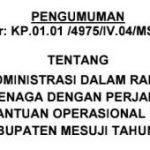Berita Terbaru
Umum
Siaran Pers
Rekrutmen
Kegiatan




















